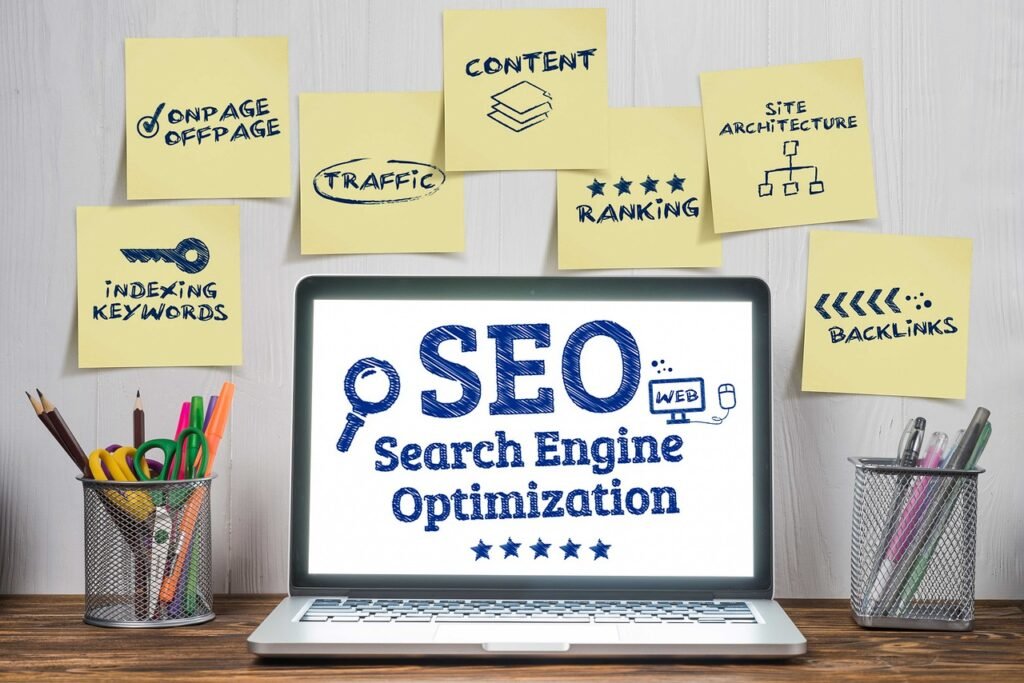Creating content that appeals to your audience and ranks high on search engines is essential in today’s digital landscape. This guide will take you through 15 practical steps to write an SEO-friendly article that both captivates readers and ensures visibility on search engines.
1. Introduction
Search Engine Optimization (SEO) is crucial for getting your content noticed online. Understanding how to write an SEO-friendly article can boost your website’s traffic and engagement. Let’s dive into the essentials.
2. Understanding an SEO-Friendly Article
Before we get into the specifics, it’s important to grasp the basics of SEO. Keywords, algorithms, and user intent are key factors that affect how well your content performs on search engines.
2.1 Basics of SEO
SEO is about making your content easy for search engines to find and understand. This involves knowing how search engines index content and what factors they consider when ranking pages. These include keywords, content quality, and user engagement.
3. Keyword Research
Keywords are the foundation of SEO. Good keyword research helps you understand what terms your audience is searching for and how to rank for them.
3.1 Tools and Techniques
Use tools like Google Keyword Planner, SEMrush, and Ahrefs to find keywords relevant to your topic. Look for keywords with high search volume and low competition. Also, consider user intent—what are people looking for when they search these terms?
4. Crafting an Engaging Title
Your article’s title is the first thing people see. It needs to be engaging and include your main keyword to catch the eye of both readers and search engines.
4.1 Importance of the Title
A good title not only grabs attention but also tells readers and search engines what your article is about. Make sure it’s clear, compelling, and concise.
5. Structure and Formatting
Organize your content with a clear structure to make it easy to read. Use headers and subheaders to break up text and help readers (and search engines) navigate your article.
5.1 Headers and Subheaders
Use H1 for your main title, H2 for main sections, H3 for subsections, and so on. This hierarchy makes your content more readable and signals the importance of each section to search engines.
6. High-Quality Content
SEO isn’t just about keywords; it’s also about providing valuable content through SEO-rich text. Your article should be informative, engaging, and relevant to your audience.
6.1 Relevance and Value
Answer your readers’ questions and provide useful information. High-quality content keeps readers on your page longer, which signals to search engines that your content is valuable.
7. Image Optimization
Images make your content more engaging, but they also need to be optimized for SEO.
7.1 Alt Tags and File Names
Use descriptive file names and alt tags for your images. This helps search engines understand what the images are about and improves accessibility for visually impaired users.
8. Meta Descriptions
Meta descriptions are short summaries of your content that appear in search engine results. They need to be compelling to encourage clicks.
8.1 Writing Compelling Meta Descriptions
Keep meta descriptions under 160 characters. Include your main keyword and make it clear what readers will get from your article.
9. URL Optimization
Your article’s URL should be short, descriptive, and include your main keyword.
9.1 Best Practices for URLs
A good URL is easy to read and gives a clear idea of the content. Avoid using numbers or special characters, and keep it concise.
10. Internal and External Links
Links are important for SEO. They help build authority and provide additional value to your readers.
10.1 Linking Strategies
Use internal links to connect to other relevant content on your site. Use external links to reputable sources to back up your information. Both types of links help improve your article’s credibility and SEO.
11. Mobile Optimization
With more people using mobile devices, your content needs to be mobile-friendly.
11.1 Responsive Design and User Experience
Ensure your website is responsive and loads quickly on mobile devices. A good user experience on mobile can boost your search engine rankings.
12. Page Speed
Page speed affects user experience and SEO. Faster pages keep readers engaged and improve your rankings.
12.1 Importance and Optimization Tips
Compress images, use a reliable hosting service, and minimize code to improve page speed. Tools like Google PageSpeed Insights can help you identify areas for improvement.
13. Social Media Integration
Share your content on social media to increase visibility and drive traffic to your site.
13.1 Boosting Visibility
Encourage readers to share your content on their social networks. Social signals (likes, shares, comments) can indirectly boost your SEO.
14. Regular Updates
Keep your content fresh by regularly updating it. This shows search engines that your content is current and relevant.
14.1 Keeping Content Fresh
Review and update your articles periodically. Add new information, update outdated facts, and improve readability to keep your content valuable and relevant.
15. Analytics and Monitoring
Use analytics tools to track your content’s performance and make data-driven decisions.
15.1 Tracking Performance
Monitor metrics like traffic, bounce rate, and engagement to see how well your content is performing. Use this data to refine your strategy and improve your articles.
Conclusion: Writing an SEO-friendly article involves a mix of art and science. By following these steps, you can create content that ranks well on search engines and engages your audience. Happy writing!




Pingback: Types of Content Writing: A Comprehensive Guide - Marketing Scrappers
Pingback: 10 Types of Content Writing for a Successful Business - Marketing Scrappers
Pingback: B2B Digital Marketing Benchmarks and trends for 2024: - Marketing Scrappers
Hello! Do you know if they make any plugins to assist with SEO?
I’m trying to get my website to rank for some targeted
keywords but I’m not seeing very good gains. If you know of any please share.
Thank you! You can read similar article here: Warm blankets
Hello Bobby,
Thank you for your comment! Yes, there are several plugins that can greatly assist with SEO and help improve your website’s ranking for targeted keywords. Here are a few popular ones:
Yoast SEO – Excellent for beginners and advanced users, it helps with keyword optimization, readability analysis, and creating SEO-friendly meta descriptions.
Rank Math – A powerful alternative to Yoast, offering features like keyword analysis, schema markup, and more for free.
All in One SEO Pack – A straightforward plugin for managing meta tags, XML sitemaps, and social media optimization.
I also recommend focusing on technical SEO aspects like site speed, mobile responsiveness, and internal linking. Feel free to explore these plugins, and let us know if you have any specific questions!